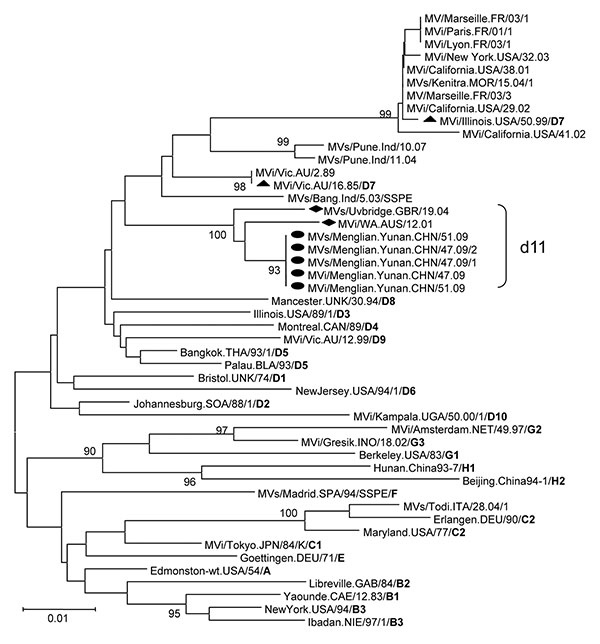Volume 16, Number 6—June 2010
Research
New Measles Virus Genotype Associated with Outbreak, China
Figure 1

Figure 1. Phylogenetic analysis of the sequences of the nucleoprotein genes (450 nt) of the strains of measles virus from Menglian County, Yunnan Province, People’s Republic of China. The unrooted tree shows sequences from Menglian viruses (circles) compared with World Health Organization (WHO) reference strains for each genotype. Triangles indicate D7 WHO reference strains; diamonds, the 2 older non-Menglian strains. Genotype designation is in boldface. MV, measles virus; MVi, measles virus sequence from isolates; MVs, measles virus sequence from clinical specimens. Scale bar indicates base substitutions per site.
Page created: February 11, 2011
Page updated: February 11, 2011
Page reviewed: February 11, 2011
The conclusions, findings, and opinions expressed by authors contributing to this journal do not necessarily reflect the official position of the U.S. Department of Health and Human Services, the Public Health Service, the Centers for Disease Control and Prevention, or the authors' affiliated institutions. Use of trade names is for identification only and does not imply endorsement by any of the groups named above.